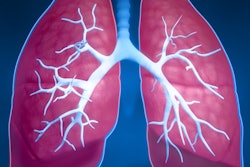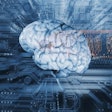Dear Artificial Intelligence Insider,
One of the biggest barriers to the clinical adoption of artificial intelligence (AI) algorithms in radiology has been the lack of reimbursement for the software. The market got a lift earlier this month, however, with news that the U.S. Centers for Medicare and Medicaid Services (CMS) has provided new technology add-on payment (NTAP) status for Viz.ai's stroke detection algorithm on CT scans.
In this issue's Insider Exclusive, we delve further into the announcement, discuss its potential ramifications, and share some industry reactions. The CMS decision is also the subject of part 7 of imaging consultant Michael J. Cannavo's Practical Considerations of AI article series. In his latest edition, Cannavo discusses the impact of the NTAP and the need for better market education.
We also have coverage for you from the Conference on Machine Intelligence in Medical Imaging, which was held virtually last week by the Society for Imaging Informatics in Medicine. A multi-institutional study found that an AI-assisted method could help radiologists to produce quicker reports with fewer major errors for evaluating advanced cancer longitudinal response.
Meanwhile, researchers from Sutter Health in California reported that a peer-review process driven by a lung nodule detection AI platform could identify lung nodules that had been overlooked by radiologists on CT exams, potentially enabling early detection of cancers that would otherwise have been missed. In the opening keynote presentation, Maryellen Giger, PhD, discussed the evolving use of AI in radiology for assisting in imaging interpretation tasks.
Machine-learning models that assess a variety of CT radiomics features show potential for predicting treatment outcomes in patients with esophageal squamous cell carcinoma, according to a Chinese research group. AI can also help reduce the no-show rate for MRI exams.
Furthermore, an AI algorithm can provide a promising level of accuracy for diagnosing heart failure on chest radiographs, Japanese researchers recently concluded. And a deep-learning model can use chest radiographs and information from electronic medical records to identify more high-risk smokers who could benefit from CT lung cancer screening than current Medicare eligibility criteria.
The world market for AI-based clinical applications for medical imaging is expected to reach almost $1.5 billion by 2024, according to an article by Sanjay Parekh, PhD, of Signify Research. Using MRI, deep learning-based computer-aided detection (CAD) software can identify patients with mild cognitive impairment due to Alzheimer's disease.
Researchers are also continuing to explore the utility of AI-based CAD algorithms in breast cancer screening. A Swedish research team found that combining radiologist interpretation with AI-based CAD can detect more breast cancer cases on screening mammograms than double reading by radiologists. The group also found that the software could be utilized to cut the screening mammogram workload for radiologists by more than half. In addition, a panel discussion at last month's International Society for Magnetic Resonance in Medicine conference also shared three lessons learned from producing AI algorithms for breast imaging applications.
An AI algorithm trained on a large dataset can be highly accurate for classifying COVID-19 pneumonia on chest CT scans, according to a group from the U.S. National Institutes of Health, graphics processing unit technology developer Nvidia, and several other institutions around the world.
Finally, our Fall 2020 Virtual Conference, "AI, Enterprise Imaging & Beyond," starts tomorrow and features two days of key opinion leaders in radiology discussing important issues in the field. There is still time to register. We hope to see you tomorrow!




















